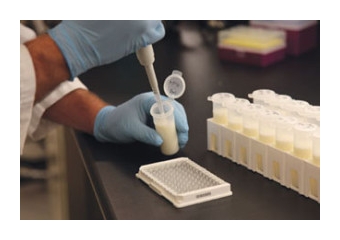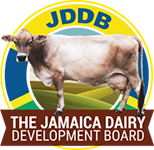Page Overview\Body Milk Quality testing is an important component of a dairy facility. In order for processors to manufacture good quality dairy products the need for good quality raw milk is essential. Good quality milk should be free from pathogens, chemical contaminants, be of acceptable smell, taste and flavor and should have the potential to maintain its quality under ideal storage conditions.

To ensure that the quality of milk is maintained, a series of milk testing is carried out at different stages from the farm right through to packaging for consumption.
Here are some tests carried out on fresh milk:
- Alcohol Testing - Alcohol testing is generally done on farm and is used for rapid determination of increase in acidity in milk. Natural milk acidity generally ranges between 0.16% and 0.18%. Test is carried out by mixing 2ml of raw milk with an equivalent 2 ml of 68% or 70% of ethanol. A high level of acidity will result in the coagulation.
- Organoleptic Testing - Organoleptic testing of milk requires the use of normal senses of taste, smell and sight to record quality. No equipment is needed to perform this test and results are obtained quickly. Further objective testing is also carried out after an organoleptic test.
- Antibiotic Testing - All milk sold for human consumption is tested for the presence of antibiotics. When cows are treated with antibiotics, some of the drugs are found in their milk.
- Methylene Blue Reduction Test (MBRT) - Methylene Blue Reduction Test (MBRT) is used to assess the microbial activity in milk. The blue colour of the dye becomes decolorized when oxygen levels within the milk decreases due to bacterial metabolism. The time taken for the reduction to occur indicates the number of organisms present in the milk. The greater the number of bacteria, the quicker the oxygen in the milk is utilized thus the quicker the colour of the dye disappears.
- Acidity Testing - Acid test is generally done to determine the level of acid in milk. A high level of acid indicates the presence of bacteria. Acidity will develop significantly as a result of bacteria acting on milk sugars. Natural milk acidity generally ranges between 0.16% and 0.18%.
- Butter Fat Test - Milk samples are also tested for butter content. In some countries the price for milk is determined by its butterfat content. The standard for quoting milk prices is 3.5 percent butter fat.
- Sediment Test - Sediment test measure impurities. A small amount of milk is passed through a special filter disc. The amount of sediment in the filter is compared to the purity standards of milk. Milk with too much sediment may be sold at a lower price or discarded.
- Lactometer Test - Lactometer is used to measure the density of milk. Test is done to show the presence of water in milk and the richness of milk. Milk has a density of 1.026 – 1.032 g/ml. The normal lactometer reading for milk should be 26◦L – 32 ◦L. Milk of greater value will be rejected by Processors.
- Solid Nonfat Test - More consumers today want food low in fat. As a result, some dairy industry is becoming more interested in solid nonfat test. When using such test milk is priced by its solid content matter than its fat content a lactometer is also used to carry out such test.
- Resazurin (Reduction Test) - Resazurin reduction test is generally carried out on raw bulk milk. Resazurin is a blue dye, when added to milk gives a colour change. A colour change indicates the reduction of dye by bacteria. The quality of the milk is judged based on the level of colour change that occurs when incubated for a period of time. A colour change from blue to purple is generally accepted and purple to pink is rejected.
- Somatic Cell Count (SCC) - Somatic cell count measures the body cells and white blood cells present in milk. A high somatic cell count in milk generally indicates an infection in the cow’s udder. Somatic cell counts that is greater than 120,000 cells/ml indicates the presence of an infection in milking cows. Milk of high somatic cell count is of low quality and is not suitable for human consumption. This test is also used to monitor mastitis within the dairy herd.
- Standard Plate Count (SPC) - Standard Plate Count is generally used to estimate the number of viable aerobic bacteria in raw milk. Test is carried out by plating milk on agar solids, plates are incubated for 48 hrs. at 52 ◦C. Counts of the bacteria grown on plates are then done.
- Ring Test - The ring test is regularly used to determine if cows have brucellosis, a reproductive disease. If the reaction to the ring test is positive, further tests are required to determine with cows are infected.
Some other test that are performed on milk usually do not affect the dairy farmer, such test include fermentation test, pasteurization tests, acid test and other. They are performed by processing plants to monitor the quality of dairy products.


